Key Takeaways
1. Strategy Must Match the Business Environment
Your strategy needs a strategy.
Environment dictates approach. The effectiveness of a strategy depends on how well it aligns with the business environment. Leaders must assess their environment's predictability, malleability, and harshness to choose the appropriate strategic approach. This assessment should consider factors such as industry stability, competitive dynamics, technological change, and regulatory landscape.
Five strategic environments:
- Classical: Predictable and nonmalleable
- Adaptive: Unpredictable and nonmalleable
- Visionary: Predictable and malleable
- Shaping: Unpredictable and malleable
- Renewal: Harsh and requiring turnaround
Mismatching strategy to environment can lead to poor performance and wasted resources. Companies operating in multiple environments may need to employ different strategic approaches across their business units or geographies.
2. Classical Strategy: Analyze, Plan, Execute in Stable Markets
Be big.
Scale and positioning. Classical strategy works best in stable, predictable environments where competitive advantage is sustainable. Companies aim to achieve superior scale, differentiation, or capabilities. This approach involves rigorous analysis of market attractiveness and competitive dynamics, followed by detailed planning and disciplined execution.
Key elements of classical strategy:
- Comprehensive market and competitor analysis
- Long-term planning and goal-setting
- Focus on operational efficiency and cost leadership
- Building sustainable competitive advantages
- Hierarchical organization structures
Examples of classical strategists include Mars in confectionery and PepsiCo in beverages, where they leverage scale and brand strength in relatively stable markets.
3. Adaptive Strategy: Continuously Experiment in Unpredictable Markets
Be fast.
Rapid experimentation. In unpredictable environments where advantage is fleeting, companies must continuously adapt through rapid experimentation and learning. The adaptive approach focuses on generating a variety of strategic options, selecting the most promising ones, and scaling them quickly.
Characteristics of adaptive strategy:
- Continuous monitoring of environmental changes
- Portfolio of small-scale experiments
- Rapid iteration and learning cycles
- Flexible resource allocation
- Decentralized decision-making
Tata Consultancy Services exemplifies the adaptive approach, constantly evolving its services in response to rapidly changing technology and client needs in the IT industry.
4. Visionary Strategy: Imagine and Create New Markets
Be first.
Breakthrough innovation. Visionary strategy is appropriate when a company can create or recreate an industry through breakthrough innovation or disruptive business models. This approach requires the ability to envision a radically different future and the persistence to bring it to life.
Key aspects of visionary strategy:
- Identifying unmet customer needs or latent demand
- Developing revolutionary products or business models
- Educating the market and shaping customer preferences
- Focusing on long-term vision over short-term profits
- Building ecosystems to support the new market
23andMe's creation of the direct-to-consumer genetic testing market illustrates the visionary approach, reimagining how individuals access and use genetic information.
5. Shaping Strategy: Collaborate to Influence Industry Evolution
Be the orchestrator.
Ecosystem orchestration. Shaping strategies are suitable in malleable but unpredictable environments where no single player can define the industry alone. Companies adopt this approach by collaborating with various stakeholders to create a shared vision and build platforms that orchestrate ecosystem activities.
Elements of shaping strategy:
- Engaging diverse stakeholders
- Creating win-win value propositions
- Building and evolving collaboration platforms
- Establishing industry standards or protocols
- Balancing cooperation and competition
Novo Nordisk's approach in developing China's diabetes care market demonstrates shaping strategy, collaborating with healthcare providers, regulators, and patients to build a robust ecosystem.
6. Renewal Strategy: Economize to Survive, Then Pivot for Growth
Be viable.
Two-phase transformation. Renewal strategy is necessary when a company faces harsh circumstances due to internal or external shocks. It involves two distinct phases: first, economizing to ensure survival, and second, pivoting towards a new growth strategy.
Renewal strategy components:
- Swift recognition and response to crisis
- Aggressive cost-cutting and focus on core activities
- Preservation of key assets and capabilities
- Development of a new strategic vision
- Transition to a different strategic approach for growth
American Express's response to the 2008 financial crisis exemplifies renewal strategy, cutting costs while simultaneously investing in digital capabilities for future growth.
7. Ambidexterity: Balancing Multiple Strategic Approaches
Be polychromatic.
Strategic flexibility. Large corporations often need to employ multiple strategic approaches simultaneously across different business units, geographies, or time horizons. Ambidexterity refers to the ability to balance these diverse approaches effectively.
Approaches to ambidexterity:
- Separation: Managing different units with distinct strategies
- Switching: Alternating between approaches over time
- Self-organization: Allowing units to choose their own approach
- Ecosystem: Sourcing different approaches from external partners
PepsiCo demonstrates ambidexterity by using a classical approach in its core beverage business while adopting more adaptive strategies in emerging markets and new product categories.
8. Leaders as Strategy Animators: Navigating Complexity and Change
Be the animator.
Dynamic leadership. In complex and changing environments, leaders must animate the strategy collage, continuously adjusting the mix of approaches across the organization. This role requires a unique set of skills and perspectives.
Key leadership roles in strategy animation:
- Diagnostician: Assessing environments and matching strategies
- Segmenter: Structuring the organization to support diverse approaches
- Disrupter: Challenging status quo and initiating strategic shifts
- Team coach: Developing strategic capabilities across the organization
- Salesperson: Communicating the strategic narrative
- Inquisitor: Asking probing questions to guide strategic thinking
- Antenna: Sensing external changes and amplifying important signals
- Accelerator: Driving implementation of critical initiatives
Pfizer's CEO Ian Read exemplifies this approach, managing a diverse portfolio of businesses with tailored strategies while maintaining a coherent overall vision.
Last updated:
FAQ
What's Your Strategy Needs a Strategy about?
- Strategy Selection Focus: The book emphasizes that there is no one-size-fits-all approach to strategy. It introduces a "strategy palette" with five archetypal approaches tailored to different business environments.
- Dynamic Environments: It discusses the unpredictable and malleable nature of modern business landscapes, urging firms to adapt their strategies accordingly.
- Leadership Framework: Provides a framework for leaders to match their strategic approach to their circumstances, enabling effective navigation of complex environments.
Why should I read Your Strategy Needs a Strategy?
- Practical Insights: Offers practical frameworks and insights to help business leaders make informed strategic decisions, backed by research and case studies.
- Diverse Strategies Understanding: Readers gain a deeper understanding of different strategic approaches—classical, adaptive, visionary, shaping, and renewal—and when to apply each.
- Adaptation Tools: Equips leaders with tools to adapt strategies as business conditions change, crucial in today’s fast-paced environment.
What are the key takeaways of Your Strategy Needs a Strategy?
- Five Strategic Approaches: Outlines five distinct approaches: Classical, Adaptive, Visionary, Shaping, and Renewal, each suited to different business environments.
- Environment Importance: Emphasizes that strategy effectiveness depends on the business environment's predictability, malleability, and harshness.
- Strategy Palette Framework: Introduces the "strategy palette" as a tool for leaders to visualize and select the appropriate strategy based on specific circumstances.
What are the best quotes from Your Strategy Needs a Strategy and what do they mean?
- "One size doesn’t fit all.": Highlights the need for flexibility and adaptability in strategy formulation, as different environments require different approaches.
- "Strategy is a means to an end: favorable business outcomes.": Reinforces that the ultimate goal of any strategy should be to achieve positive business results.
- "Your environment dictates your approach to strategy.": Stresses the importance of understanding the external environment when developing a strategy.
What are the five strategic approaches discussed in Your Strategy Needs a Strategy?
- Classical (Be Big): Suitable for predictable environments, focusing on scale and efficiency through rigorous analysis and planning.
- Adaptive (Be Fast): Emphasizes speed and flexibility in unpredictable environments, allowing quick capitalization on emerging opportunities.
- Visionary (Be First): Focuses on innovation and bold moves to create or reshape industries, establishing market leadership.
- Shaping (Be the Orchestrator): Involves collaboration with stakeholders to create or redefine markets, building a shared vision.
- Renewal (Be Viable): Used when facing severe constraints, focusing on conserving resources and pivoting to rejuvenate growth.
How does the strategy palette work in Your Strategy Needs a Strategy?
- Strategy Selection Framework: A visual tool that helps leaders match their strategic approach to their specific environment, categorizing strategies into five archetypes.
- Dynamic Application: Allows leaders to apply different strategies simultaneously or sequentially across various business parts for a nuanced approach.
- Decision-Making Guide: Serves as a guide for assessing environments and choosing the most appropriate strategy based on unique challenges and opportunities.
What are the characteristics of a classical strategy in Your Strategy Needs a Strategy?
- Predictable Environment: Best suited for stable environments where competition is well-established, relying on analysis and planning.
- Scale and Efficiency Focus: Aims for sustainable competitive advantage through size, differentiation, or superior capabilities.
- Long-Term Planning: Engages in long-term planning processes to build and sustain competitive positions over time.
What defines an adaptive strategy in Your Strategy Needs a Strategy?
- Unpredictable Environment: Employed in environments that are neither predictable nor malleable, requiring readiness to change quickly.
- Speed and Flexibility Focus: Prioritizes speed and flexibility to respond rapidly to changes in technology, customer needs, and competition.
- Iterative Experimentation: Involves a cycle of varying strategies, selecting promising options, and scaling them up for competitive advantage.
How does a visionary strategy differ from other approaches in Your Strategy Needs a Strategy?
- Creating New Markets: Focuses on creating or reshaping industries by being the first to act on significant opportunities.
- Fixed Goals, Flexible Means: Maintains a clear end goal while remaining flexible in methods to overcome obstacles.
- Timing Importance: Acts quickly to capitalize on emerging trends or technologies, leveraging first-mover advantage for market leadership.
What role do leaders play in shaping strategy according to Your Strategy Needs a Strategy?
- Environment Diagnosis: Leaders assess the business environment to determine the appropriate strategic approach.
- Strategy Collage Animation: Orchestrate various strategic approaches within the organization, integrating and executing them effectively.
- Adaptation to Change: Adjust strategies and approaches as environments evolve, maintaining competitive advantage.
What is the shaping approach and how is it implemented according to Your Strategy Needs a Strategy?
- Core Idea: Focuses on engaging stakeholders and creating a collaborative ecosystem to drive mutual value.
- Implementation Steps: Involves selecting stakeholders, creating a shared vision, and building collaboration platforms.
- Leadership as Catalyst: Leaders act as catalysts, facilitating interactions and fostering an open culture for long-term success.
What does the renewal approach entail in Your Strategy Needs a Strategy?
- Definition: A temporary strategy used when facing significant challenges, focusing on restoring financial viability.
- Phases of Renewal: Involves economizing to cut costs and pivoting to growth through strategic innovation.
- Leadership's Role: Leaders make tough decisions to stabilize the organization and communicate a clear future vision.
Review Summary
Your Strategy Needs a Strategy is praised for providing a comprehensive framework to choose and execute the right strategic approach based on a company's environment. Readers appreciate its clear categorization of strategy types and practical guidance on implementation. The book's use of real-world examples and mathematical models to support its conclusions is commended. While some critics find the writing style overly complex, most reviewers consider it an essential read for business leaders and strategists, offering valuable insights into adapting strategies to different contexts.
Similar Books


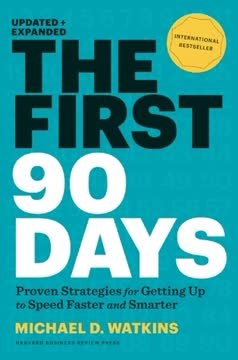
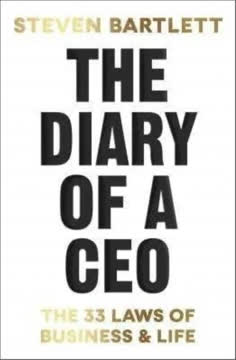
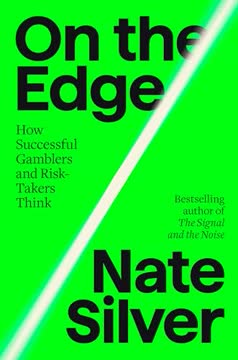

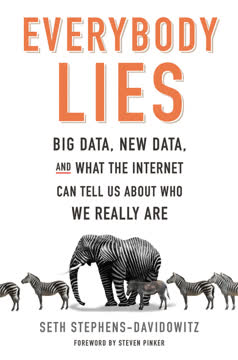


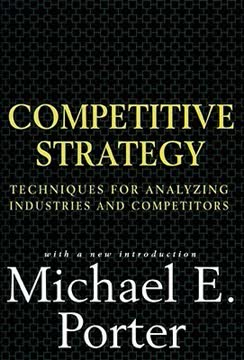
Download PDF
Download EPUB
.epub digital book format is ideal for reading ebooks on phones, tablets, and e-readers.




